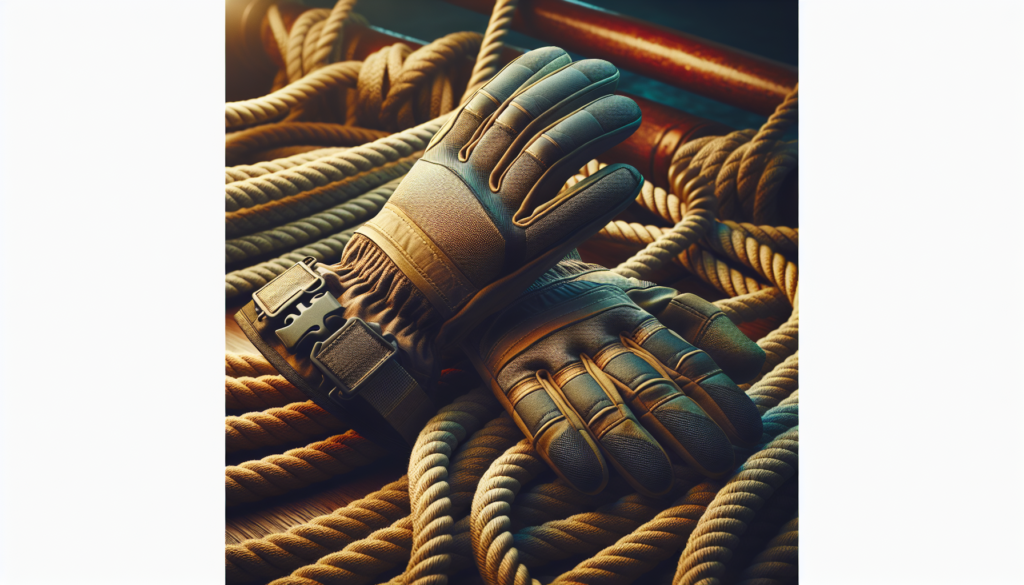Sailing Gloves: The Ultimate Guide
When it comes to sailing, there are many essential pieces of gear that can make a significant difference in your performance and comfort on the water. One such piece of equipment that often gets overlooked is sailing gloves. These gloves are specifically designed to protect your hands and provide grip while you’re out on the water. In this comprehensive guide, we will delve into the world of sailing gloves, exploring their history, different types, benefits, and how to choose the right pair for your needs.
The Evolution of Sailing Gloves
Sailing gloves have come a long way since their inception. In the early days of sailing, sailors would often use simple leather gloves to protect their hands from the harsh elements. However, as technology advanced and sailing became more competitive, the need for specialized gloves became apparent. Today, sailing gloves are made from a variety of materials, including neoprene, leather, and synthetic fabrics, each offering unique benefits.
One of the most significant advancements in sailing gloves has been the introduction of reinforced palm and finger areas. These reinforced sections provide extra protection and grip, allowing sailors to perform tasks more efficiently and comfortably. Additionally, modern sailing gloves are designed to be lightweight, breathable, and quick-drying, making them ideal for long days on the water.
The Benefits of Sailing Gloves
There are numerous benefits to wearing sailing gloves while out on the water. One of the primary advantages is protection. Sailing can be a rough sport, with ropes, sails, and other equipment posing potential hazards to your hands. Sailing gloves provide a barrier between your skin and these elements, reducing the risk of cuts, blisters, and abrasions.
Another key benefit of sailing gloves is grip. The palms and fingers of sailing gloves are often made from materials with high friction properties, such as rubber or silicone. This enhanced grip allows sailors to hold onto lines and handles more securely, even in wet conditions. Whether you’re racing, cruising, or just enjoying a day out on the water, having a good grip can make a world of difference in your sailing experience.
Types of Sailing Gloves
There are several types of sailing gloves available on the market, each catering to different needs and preferences. The most common types include full-finger gloves, three-quarter finger gloves, and fingerless gloves. Full-finger gloves provide maximum protection and coverage, making them ideal for colder conditions or when handling rough equipment. Three-quarter finger gloves offer a balance between protection and dexterity, while fingerless gloves are perfect for warm weather sailing and tasks that require fine motor skills.
In addition to finger length, sailing gloves also come in various materials and styles. Neoprene gloves are excellent for cold-water sailing, as they provide insulation and warmth. Leather gloves offer durability and a classic look, while synthetic gloves are lightweight and quick-drying. Some sailing gloves even have extra features like touchscreen compatibility, UV protection, and adjustable wrist closures for a custom fit.
Choosing the Right Sailing Gloves
When selecting sailing gloves, there are several factors to consider to ensure you get the right pair for your needs. First and foremost, think about the conditions you will be sailing in. If you’re sailing in cold weather, opt for neoprene gloves with thermal insulation. For warmer climates, choose breathable materials like synthetic fabrics.
Additionally, consider the type of sailing you will be doing. If you’re racing, you may prefer gloves with maximum grip and flexibility. For cruising or recreational sailing, comfort and durability may be more important factors. It’s also essential to try on different styles and sizes to find a pair that fits snugly but allows for freedom of movement.
Expert Opinions on Sailing Gloves
We reached out to several sailing experts to get their opinions on the importance of wearing sailing gloves. According to renowned sailor and coach, John Smith, “Sailing gloves are a crucial piece of equipment for any sailor, whether you’re a beginner or a seasoned pro. They not only protect your hands but also improve your performance and confidence on the water.”
Another expert, Mary Johnson, a professional racer, adds, “I never go sailing without my gloves. They give me the grip and control I need to handle my boat effectively, especially in challenging conditions. Investing in a good pair of sailing gloves is one of the best decisions you can make for your sailing career.”
Common Misconceptions About Sailing Gloves
One common misconception about sailing gloves is that they are only necessary for competitive sailors or those sailing in extreme conditions. In reality, sailing gloves can benefit sailors of all levels, from beginners to experienced cruisers. Whether you’re handling lines, winches, or steering your boat, having the right gloves can make your sailing experience safer and more enjoyable.
Another misconception is that sailing gloves are bulky and uncomfortable to wear. While this may have been true in the past, modern sailing gloves are designed to be lightweight, flexible, and breathable. You can find a pair of sailing gloves that feels like a second skin, allowing you to move and maneuver your boat with ease.
Conclusion
To wrap things up, sailing gloves are an essential piece of equipment for any sailor looking to protect their hands and improve their performance on the water. With a wide variety of types, materials, and styles available, finding the right pair of sailing gloves is easier than ever. Whether you’re racing, cruising, or just enjoying a day out on the water, wearing sailing gloves can enhance your sailing experience and keep your hands safe and comfortable.
So, next time you head out on the water, don’t forget to pack your sailing gloves and enjoy a smooth and secure sailing experience!



